Note
Hi there, My name's Nick and I work for a publisher who are working on a book that has a chapter on pre-owned clothes. The author has written about a company called Share-Wear. Am I right in thinking that Untagged Fashion used to be Share-wear? She also writes about a ShareWear App (which I think was Android only). If 'Sharewear' and 'Untagged' are one and the same do Untagged have a mobile phone app? Hope you can help. Many thanks, Nick
Hi Nick,
You are absolutely right, Share-wear has changed its name to Untagged. The mobile app is currently in development, due for launch later this year. I think the reference to a prior app must have been our website (untaggedfashion.com), which was a pilot site that has informed our app build.
Many thanks, Gayle
2 notes
·
View notes
Text
Tackling the growing problem of e-waste.
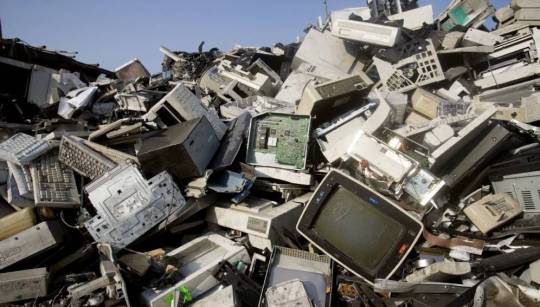
We all know about food waste and fashion waste, but you may not have realised that the fastest growing waste stream in the world is electrical or electronic (e-) waste. What to do with discarded mobiles phones, laptops, toasters, irons, TVs and kids electrical toys is a mounting problem: 50 million tonnes of e waste are generated globally each year, and this is set to increase to 120 millions tonnes by 2050.
Put it this way, there is 100 times more gold in a tonne of mobile phones than in a tonne of gold ore. And that’s not to mention all the other precious metals that are mined for use in our electronics, and then dumped when the device no longer works, never to be used again. Sadly, only 20% of e waste is currently recycled.
There is 100x more gold in a tonne of mobile phones than in a tonne of gold ore
So what of the other 80%? No doubt large amounts are left languishing in drawers and cupboards, and many smaller items are thrown in the bin and then make their way to landfill, where the metals and chemicals leach out over time. There is also an illegal trade in shipping used electrical equipment to China, Africa and India, where entire villages, including children, undertake the dangerous task of extracting the components.
It is clear that manufacturers need to take responsibility for tackling this problem, producing products that are easily recycled and made from recycled materials, as well as looking at new business models. Indeed, the days of renting your TV and washing machine may no longer be a thing of the past. You can even lease your lightbulbs - Philips has designed a ‘Light as a Service’ model where you pay a subscription and your lighting installation, repairs and servicing is all taken care of for you.
So what can you do right now to reduce your e waste? We have 4 tips to consider each time you’re thinking of a phone upgrade.
1. Hold onto the item for as long as you can
We know the lure of a phone upgrade is difficult to resist, but manufacturers are often trying to get us to upgrade well before our current model is obsolete. If you can hold onto your phone for an additional 6, 12, 24 months, you’re doing your bit to stop the cycle of constantly looking for the next new thing.
When it comes to other electrical items, such as toasters or kettles, if they go wrong it can often be a very simple problem to fix. The problem is that these days it is generally cheaper to buy a new one than to take it to a repairer. But what if you could learn how to do some basic repairs yourself? Therestartproject.org offers free workshops around the country - we reckon it’s a great way to learn a new skill.
2. Consider buying a refurbed model
Backmarket is a company that offers refurbished models, and also ensures you have all the info, and warranties, you would expect with new items. And of course they’re much cheaper than buying new.
3. Let the manufacturer take your old model
Most mobile phone companies now offer trade-ins, where your old phone is dismantled and recycled. For bigger electrical items such as fridges and washing machines, when you buy a new one you usually have the option for your old one to be recycled for you. There will be a charge, but it’s better than your old fridge rusting away in the front garden.
4. Use dedicated e waste recycling facilities
Whatever you do, DO NOT put your used electricals in the bin! We know it is tempting as recycling them is an extra hassle, but it is our responsibility to ensure our old items are disposed of properly. You can find here where your nearest e waste recycling facilities are.
0 notes
Text
90′s trends that are great for thrifting
We all know that fashion is cyclical, and here at UNTAGGED we love to embrace reigniting trends from the past. It’s unlikely to have skipped your attention that certain fashion looks from the 1990s have been making their come-back, and we can’t think of a better reason to shop your parent’s wardrobe, or check out your local charity shop.
Leather blazer
Following from the summer’s trend of the oversized jacket, for winter we’re moving towards the oversized leather blazer. Wear them open or belted, and black or brown. And as leather is an investment piece, this is a great one to shop for in charity or second-hand.

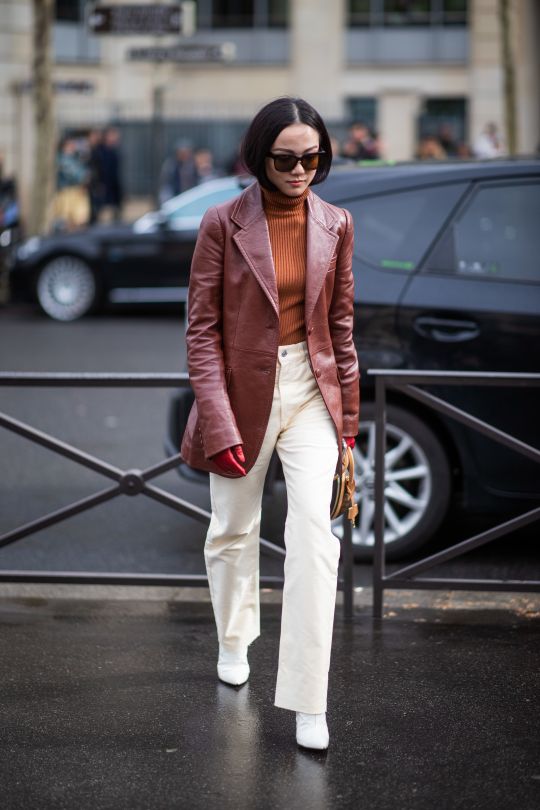
Chunky boots
This season everyone is wearing chunky black boots. We love the fresh new take on them, where they’re no longer just paired with jeans, but also used to transform dresses for the daytime. If you can find some old Doc Martins lying around you’re definitely onto a good thing; otherwise any kind of biker or Chelsea boot will do the trick.
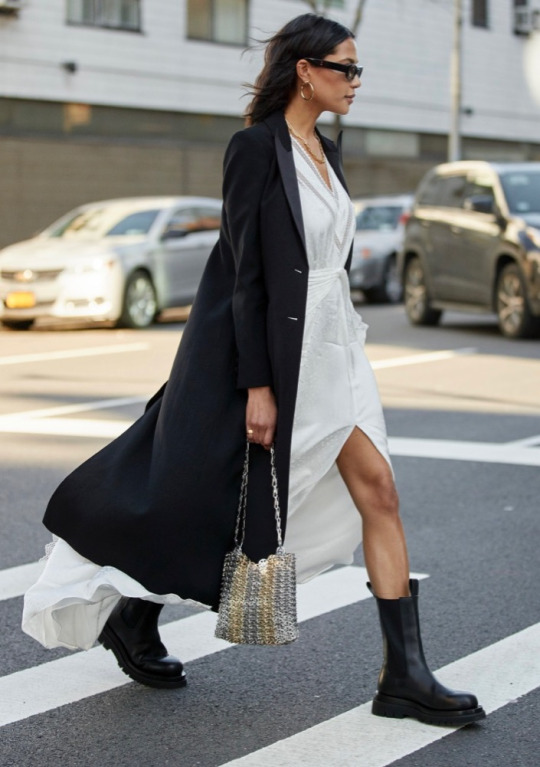
Cardigans
There are always loads of cardigans to search through in charity shops, and this season they are very much on trend. We like them worn without another top underneath, and baggy or cropped, anything goes. Alongside the fairisle tank top (loved by Alexa Chung), these are great items to also check through your mum (and dad’s!) wardrobes, and see how you can style them up with belts and shirts.
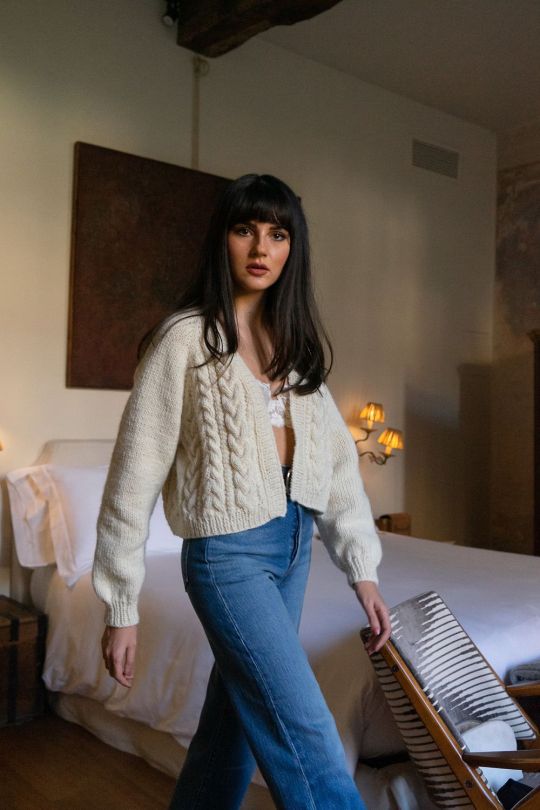
Bumbags
We’ve been seeing these appear on the catwalks over the last couple of seasons, and now they’re very much part of street style. These days known by the slightly more appealing label of ‘belt bag’ or ‘waist bag’, designer versions from Saint Laurent and Chanel sell for over £700. We reckon there are plenty to be found in charity shops and we are thrilled that this very practical, but previously rather tacky trend, has been embraced and turned into a style statement.
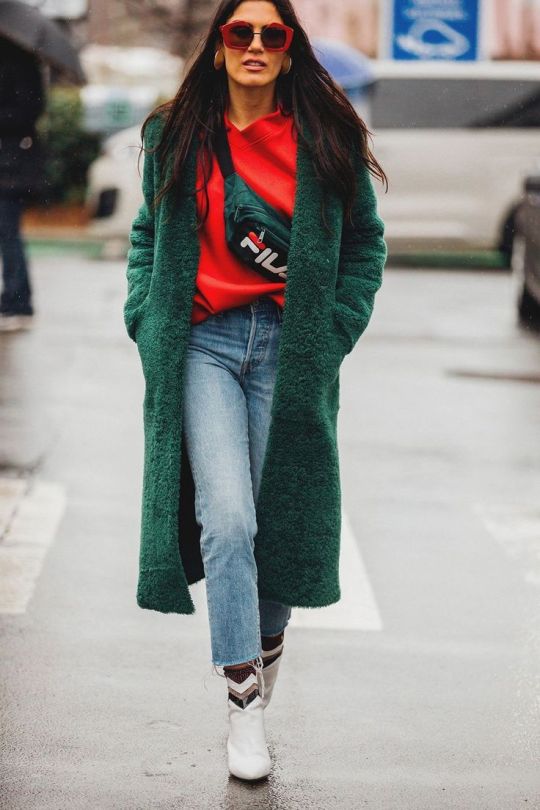
Cycling shorts
Like bumbags, the thought of cycling shorts as ‘fashion’ brings those of us who were around for them the first time out in a bit of a cold sweat. But somehow, fashion influencers have made them look cool. Paired with cropped tops and oversized jackets, or with a baggy T-shirt and trainers, this look was everywhere this summer and we’ll bet it’s not going away just yet.

0 notes
Text
Outerwear must-haves for AW20
Wondering what to wear this autumn?
This season, you can prioritise comfort. Trends are all about cocooning silhouettes, brushed textures and a minimal palette of neutrals! Shapes are oversized, textures are soft, colours are warm and neutral.
Are you getting colder and colder as winter is coming? Check our selection of the must-have coats for the season, inspired by trends reports and fashion shows.
1. Oversized blazer
Keep the proportions relaxed, with extreme volume at the shoulder to provide a boxy fit through the body. You can also opt for a slightly outsized silhouette and belt it for a more feminine look.
You don’t have one in your wardrobe? Have a look at your mum’s, dad’s or even grandpa’s closet!! I am sure you will find a true vintage one!

2. Quilted coat
The quilted coat is prominent across street style and trade shows! Enrich simple cut silhouettes with innovative stitch details to elevate styles. Same as with the blazer you can go for the belted look too.
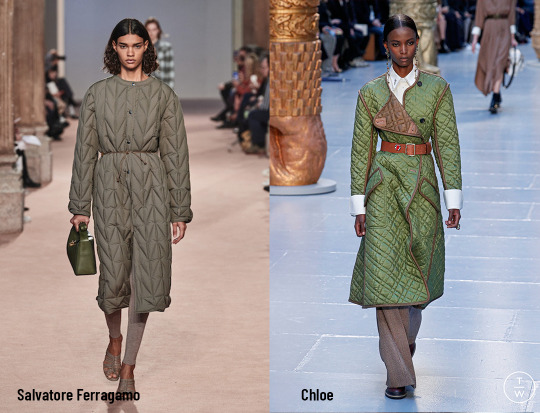
3. Trench coat
The must have of the Autumn season remains always the iconic trench coat. Over the last couple of seasons, the trench coat has become a wardrobe essential and a mainstay of transseasonal outerwear. Focus on classic styles and update with clever details and accessories for a point of difference.
Check out instagram for more styling ideas about wearing the classic trench coat.
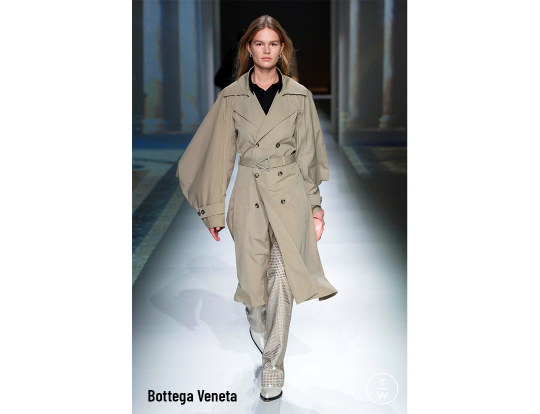
4. Belted coat
The belted coat blends comfort and style, and taps into this season's elegant comfort trend, while offering nonchalant ease with classic appeal. Embrace cosiness with a slightly dropped shoulder and loose-cut sleeves.

Inspired by the runways, you can now check your personal wardrobe as well as the back of your mum’s and grandma’s ones, you never know what you can find!
Want a wardrobe refresh?
Each week we will be offering up FREE swaps (you just need to pay P&P), and we invite all you lovely people to upload any items you would like to swap too (they can be free or to buy). More information can be found on the facebook group (https://www.facebook.com/groups/614922642533763/).
#untaggedfashion#sustainablefashion#secondhandfashion#secondhandstyle#trends#aw20#stylingideas#outwear#swapping#clothingswap#winterstyle#autumnstyle#stylinginspo#runways
1 note
·
View note
Text
Selfridges Project Earth: a PR campaign or a genuine step in the right direction?
A story woven into every stitch.
A memory tucked up every sleeve.
A bounce felt in every step.
A lifetime of good times yet to come.
Let’s put the love back into pre-loved.
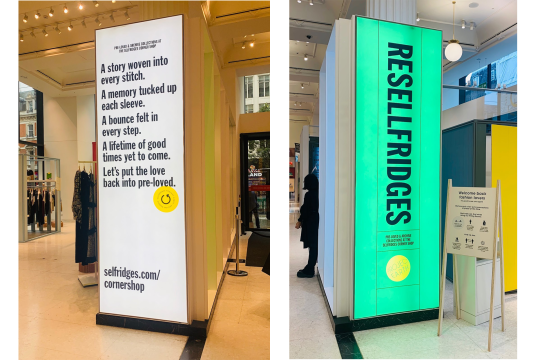
These are the words that greet you as you enter London’s Selfridges Accessories hall and the new concession in their ‘Corner Shop’ space. Fabulous words that evoke the love, care and history embedded in our clothes and encourage us to take a different view on how we experience fashion and shopping.

So is Selfridges genuinely trying to get us to change our behaviour, or is this all a PR stunt?
As part of their Project Earth, there are a number of initiatives you can find throughout the store. The aforementioned Corner Shop plays hosts to a number of independent pre-loved sellers, and on level 3 there is also the in-store Vestiaire Collective pop-up. Pre-loved items can also now be bought online.
Fashion rental is also possible, with a beautiful pop-up from HURR Collective on level 4.
Selfridges have also made it easier for you to find brands which have ethical and sustainable practices, building a Project Earth collective, and signposting such brands with Project Earth labels that explain their sustainable credentials.

There is no doubt that Selfridges wants to be a thought-leader when it comes to how to shop fashion more sustainably, and we applaud the steps and visibility they have created with this activity. Sadly, unless you have deep pockets, it is unlikely you will be able to participate in any of these initiatives however; the cheapest item in their online pre-loved collection is a pair of vintage Levi’s denim shorts for £95.
What we now need is more of the High Street brands to follow suit and encourage re-use and re-wear as that will be the only way we will really be able to drive behaviour change. That is why we are building our new UNTAGGED platform, to provide an aspirational resale environment that everyone can access. Until then I guess we’ll keep on trying ebay and charity shops!
#untaggedfashion#fashion#circularfashion#sustainablefashion#selfridges#london#ethicalfashion#conscious#style#vintagefashion#ecofashion#clothingswap
0 notes
Text
Wear and re-wear
Stop the stigma about outfit repeating!
Here at UNTAGGED, we love clothes; we can always mix them up & accessorise them differently to express who we are without having to say anything. I love to wear my favourite blue sweater over long dresses, pleated skirts or for a more casual look, with my wide legs jeans. There are so many ways to wear each item we own. So what’s the stigma about re-wearing our clothes?
“I feel like if I pay good money for something, I wear it when I want, however many times I want, as long as I Febreze it.”

Image: Elle
Tiffany Haddish wore the same white dress on the red carpet of the premiere of her movie, Girls Trip, as she did hosting “S.N.L” and at the Oscars.
There are some cultural assumptions shared and widely accepted through social media that once we have posted a picture of an outfit on Instagram, it cannot appear ever again on our feed. Indeed, a study by Hubbub highlights that 1 in 6 young people don’t feel they can wear an outfit again once it’s been on social media. This is completely accepted by so many people on social media and it is actively encouraging overconsumption habits where we buy more and more clothes to get the latest trends and styles and forget about them two weeks after.
It is not only present on socials but also in real life. The same study shows that 41% of young women (18-25yo) feel the pressure of wearing a different outfit every time they go out. Not just money waste, it is leading to clothes being worn only once, making the UK one of the European top producers of textile waste.
Is it really worth buying a garment if we will be wearing it only for an insta pic? Honestly, is there any logic in it? Let’s stop everything for just a minute and think about what’s wrong in re-wearing. Nothing! Rather than hiding and stigmatising it, we should normalize and even celebrate it! So let’s reverse the norms. Re-wearing is normal, isn’t it why we bought our clothes?
On the video we recently shared on our Instagram David Tennant shows there is no shame at all in repeating outfits, even if it was not intended. Thankfully, lots of celebrities are intentionally wearing the same outfits several times at public events. Kate Middleton is the queen of repeating. Take the white Alexander McQueen dress she wore 4 times: for Meghan and Harry’s wedding in May 2018, for the commemorations of Passchendaele battle in Ypres in Belgium in July 2017, for the Queen’s 90th birthday in June 2016 and for the baptism of her daughter Charlotte in July 2015.
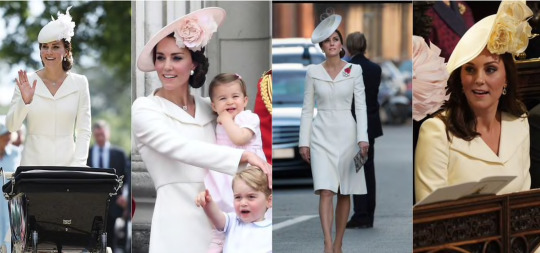
Image: LaLibre.be
If they are doing it, why not us too?
Love your clothes, create some fantastic outfits mixing them up, and wear them again and again! If you stop following this senseless rule about not re-wearing, you will love your clothes more, save money, care more about your items and avoid additional textile waste. It’s worth trying, don't you think?
0 notes
Text
Sustainable fabric alternatives
Cactus handbags, coffee bean sportswear and nettle T-shirts….the future of sustainable fashion?
As we wake up to the impact of fashion on our planet, its increasing use of nature’s limited resources and the huge waste that is piling up, many weird and wonderful new developments and technologies are appearing that are seeking to be more sustainable and ‘circular’, meaning they reduce or eliminate waste at each stage of the lifecycle - perhaps creating fabrics that are fully biodegradable, or have no wasteful byproducts, or are even made from waste.
Here are some of the new textiles leading the charge.
Cactus leather - Desserto
Most vegan/fake leather items are made from plastic, so this cactus-derived leather is a welcome alternative. Made from the nopal cactus that grows abundantly in Mexico which requires hardly any water to grow, it is partly biodegradable, soft and durable and can be used to make clothes and accessories. Cactus shoes anyone?

Used coffee beans - S.Cafe
No, that isn’t a mistake, revolutionary brand S.cafe really does take used coffee beans and turns them into fabric. The resulting material has high performance benefits such as fast-drying, odour-control and UV protection, perfect for the next generation of sportswear. Brands like The North Face, American Eagle Outfitters and Hugo Boss have already seen the opportunity. In the future you really could be wearing your coffee!

Stinging nettles
Nettles were used thousands of years ago to make fabric and are making a comeback, due to how easy they are to grow, and how little water they require compared to conventional plants like cotton. They are also really versatile to use and the hollow fibres allow air to pass through the fabric, making them nice and cooling. And no need to worry about the sting - this is removed during the production process.
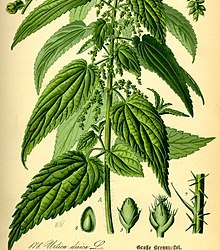
Recycled nylon - econyl
Virgin nylon is made from crude oil through an intensive chemical process that produces high amounts of greenhouse gasses, and uses lots of water and energy. It also doesn’t biodegrade so will sit in landfill for centuries.
Thankfully, it can be recycled, and brands like Econyl, made from regenerated nylon, are being picked up by brands such as Adidas, Stella McCartney and Patagonia.

Recycled plastic bottles
Repreve is a fibre made from upcycled plastic bottles, used by brands including Quicksilver, Patagonia and Mara Hoffman. To make a fabric from a plastic bottle, the bottles are first broken down into pieces, then melted into pellets. These pellets are then melted again and spun into a yarn.
Sneaker brand Veja uses a version called B-mesh, and EcoAlf takes it one step further, using recycled ocean plastic. Even Marks and Spencer is giving it a try! It’s great to see a more circular approach becoming more mainstream.
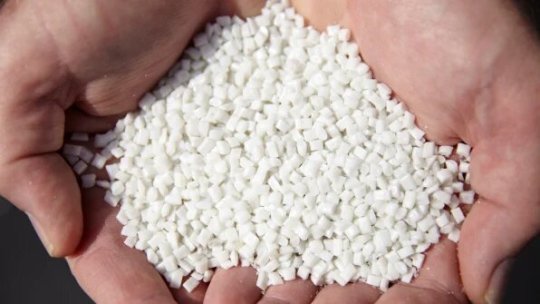
0 notes
Text
In conversation with…The fashion celebrity stylist Gayle Rinkoff!
Do you know Gayle Rinkoff? She is a fantastic and always smiling fashion and celebrity stylist who worked among others with Vogue, GQ and Vanity Fair. Like everyone, we fell in love with her collection of beautiful dresses. To help us try to sort out our closets, we were wondering what Gayle thinks about her wardrobe, what are the essentials we should keep, how we know what to get rid of….so we asked her the questions!
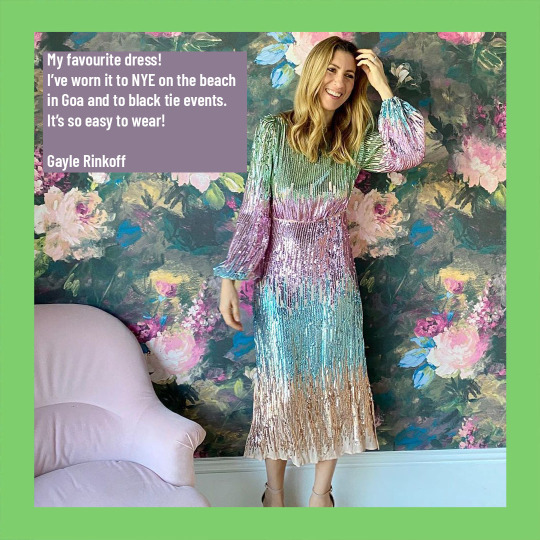
5 essential items for any wardrobe?
Gayle:
1. Jeans that you love, that are super comfy and you feel great in.
2. A good cashmere sweater – it really is worth investing. They go with anything from tracksuit bottoms to over a dress.
3. A good quality classic coat.
4. A good pair of boots or summer sandals.
5. A go to dress that you can dress up or down. Wear it with trainers and a biker jacket or heels.
How do you decide if you should keep something?
Gayle: Does it still fit you? Don’t keep things because you think you will lose weight. Especially after kids, even though you do lose the weight, you won’t always be the same shape. If you haven’t worn it for a year to 18 months it’s time to go!
Views on saving things for best
Gayle: I’m a big advocate of not saving for best. It used to be the case that the more you spent on something, the less you wore it. That’s just not cost effective. I’m a lover of sequins in the day. If you love something, you feel great!
Key accessory?
Gayle: Accessories can do so much to an outfit! A really good bag is a great investment. If you tend to wear more monochrome then a bag can bring a real pop of colour too.
How often should you review your wardrobe?
Gayle: Every 6 months. Summer and Winter are a good time because your mindset is changing. You don’t have to do a big changeover at that time. I don’t because I wear my summer dresses in the winter too – I just layer them up. But assessing what you have is really important as that also helps when you go shopping as you know what you have already.
Your favourite item?
Gayle: My Rixo multicoloured sequin dress. I love the colours, the shape, it’s easy to wear and not constricting. I’ve worn it to Black Tie events and NYE on the beach in Goa!
How many clothes are too many?
Gayle: I couldn’t say – it’s more about if you are wearing them. When you do your twice yearly detox or refresh try everything on and make sure you are looking at how many things you haven’t worn rather than the things you have. Then assess whether they stay or go.
Key fabrics that last?
Gayle: Any natural fabrics like linen and 100% cotton – especially when warm. They wash better too which means they last longer. Even with cashmere you can get machine washable versions now so that doesn’t need to put you off
Styles that transcend seasons and fashions?
Gayle: A blazer is always a good thing! I make most things work. It’s about adapting what you have to the current trend rather than going out and buying new things. Shop your wardrobe!
Top tip
Gayle: Experiment – try different combinations e.g. if you always wear the same top with your jeans, try that top over a dress. Mix up what you already have and you will find you have several different outfits.
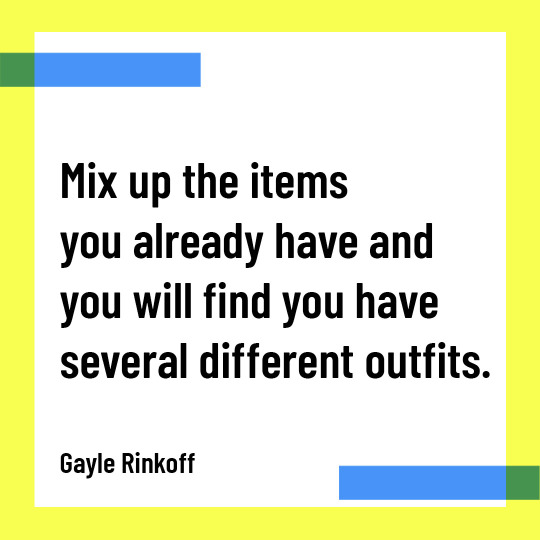
We hope this will help you to better organise your wardrobe and make some choices as we move into Autumn. It’s difficult to declutter our closets, so be realistic. If you’re not wearing an item anymore maybe it’s time to exchange it for something you will wear much more instead!
Also, we love Gayle’s tip about trying different combinations. We tend to wear the same top with the same trousers and get easily bored of it. So instead of buying new garments, open your wardrobe, and let your creativity guide you! You will be surprised by how many new combinations of clothes you will find and love!
@gaylerinkoff
0 notes
Text
5 ways to reduce your fashion carbon footprint
The fashion industry is responsible for 10% of global CO2 emissions, and if we continue to increase our consumption at the current rate, this could grow to 25% by 2030. Clearly this is not sustainable, and we can all do our bit to turn the tide. Here are some solutions that I have incorporated into my everyday life, to try to have a more positive impact.
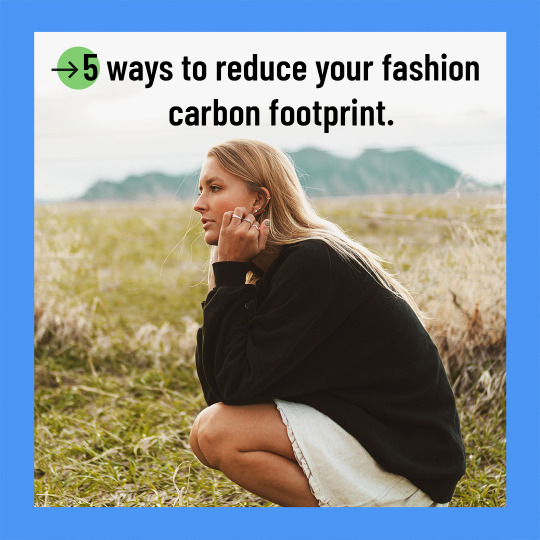
1. The 30 wears challenge
This has been doing the rounds a lot on social media over the last year-or-so, and I think this is a really easy concept to grasp: only buy an item if you can imagine wearing it at least 30 times. That’s quite easy for a pair of jeans or a T-shirt, but really makes you stop and think when it comes to dresses and fashion-led items. The idea is to build yourself a capsule wardrobe of items you will cherish and wear in different ways.
I have also found many influencers are really great at styling items they’ve had for years in different ways, and they provide great inspiration (I love @trinnywoodall and @doesmybumlook40, let us know who you like!).
2. Only order online what I really think I’ll buy
The shocking truth is that many retailers do not re-integrate online returns into their system as to do so is too costly. This means that every time you order an item you don’t buy, it may go straight to landfill. So I no longer order loads of clothes to try at home, I restrict my online orders to only what I genuinely think I will buy, and try not to order in multiple sizes.
3. Wash less
We wash our clothes too often. In my household I saw habits forming where clothes were chucked in the wash after one wear. Now, often that’s needed with my teenage stepsons (!), but more often than not, clothes can be worn multiple times before they need to be washed. You can also try airing clothes once you’ve worn them. And another thing to try is washing at 30 degrees instead of 40, which reduces energy usage by up to 40%, and helps your clothes last longer. This has been a revelation for me, and the clothes still come out clean. Try it!
4. Second-hand first
A big mindset change for me since starting UNTAGGED has been to choose second-hand before new. I think about the gaps in my wardrobe and start my search on websites like ebay and Vestiaire (and UNTAGGED of course!) before considering buying it new. Right now I’m on a search for a leopard-print coat to take me through autumn - let me know if you spot something.
5. Learn to mend
It’s such a shame that many people don’t know how to mend a small hole in an item of clothing, or sew on a button. The idea of throwing something away just because it has a small blemish is so wasteful. There are websites and instagrammers who offer tips on how to repair and upcycle if you don’t feel very confident. I’ve also found a brilliant seamstress who can alter things I buy online that don’t quite fit - if you love something it’s really worth considering this before getting rid of it.
I’d love to know what you do to reduce your fashion footprint, please share your top tips!
1 note
·
View note
Text
Why should second-hand be your first choice?
There’s nothing more sustainable than what already exists!
A report from US company ThredUp shows that resale has grown 21x faster than retail over the past 5 years! Why should second-hand be your first choice?
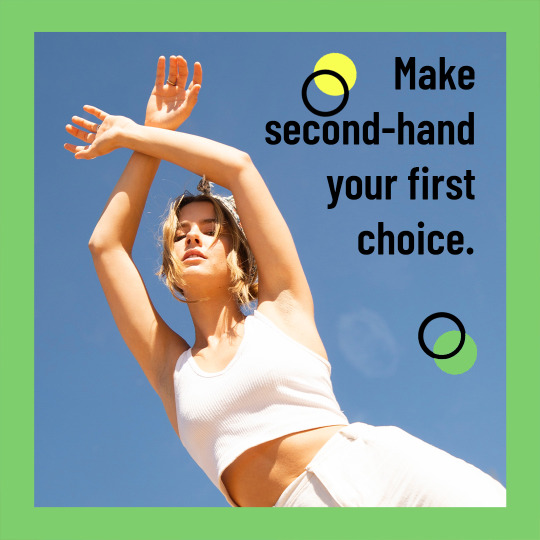
1- It’s a way to reduce your negative environmental impact easily
Today we are consuming natural resources as if we had 1.7 planets at our disposal. But it gets worse - the UN predicts that we will need 3 planets by 2050 to support our world population. We know we have scarce resources but are consuming as if we didn’t know. Garment production requires huge amounts of natural resources, such as enormous quantities of water for the extensive production of cotton. Buying second-hand clothing avoids additional waste and pollution as well as making the most of the garments already produced.
Also, research shows that by extending the life of clothing by an extra 9 months would reduce carbon, waste and water footprints by around 20-30% each and cut resource costs by 20%! It’s definitely worth wearing again the cute printed shirt you have in your closet.
Sometimes being more sustainable doesn’t need much effort, just by wearing what exists rather than buying brand new, you can have such a positive impact on the environment!
2- It saves hundreds of good clothes going to landfill
Today, we buy about 400% more clothes than we did two decades ago. And as you can imagine, as fashion consumption rises, so does waste.
This results in hundreds of clothes in very good condition ending up in landfills.
Clothing resale or exchange enables circular processes where the items never end up abandoned or burnt.
3- To boost clothing care
Because of the development of fast fashion from 2000, we have been used to extensive consumption rather than actually caring about what we own. The new normal is to buy cheap trendy clothes you don’t necessarily need that you will wear no more than 2 or 3 times and then won’t know how to get rid of. We have forgotten sentimental values linked to our items over the number of clothes that can fit in our wardrobes. The more you care about your items, the longer they will last. Each item has its own story & at UNTAGGED we love to know the stories behind the clothes you upload on the site!
4- You can find real gems
What’s better than being enchanted by vintage pieces that have a whole history?
With second-hand fashion, you can dress differently, find unique pieces that you can’t find anywhere else. You can mix and match items to create your own style!
5- Last but not least: you save money!
Buying second-hand clothes is less expensive and better still, swapping clothes with UNTAGGED is totally free!
Those are a few reasons why second-hand fashion should be your first choice. Don’t hesitate to have a look at our site. There are hundreds of items waiting to be swapped out. Upload the items you don’t wear anymore and give them a second life.
This month, we are supporting Oxfam’s #SecondHandSeptember campaign to pledge to only shop second-hand for 30 days. It’s never too late to start your second-hand journey so start today.
Share your pledge using #UntaggedSecondHand and tag us!
0 notes
Text
10 surprising (and devastating) facts about fashion
As we’ve been on our journey with UNTAGGED, we’ve become more and more aware of the impact of fashion...and it doesn’t make for good reading. Here are some of the key facts that have given us reason to pause.

1. Fashion is the 2nd most polluting industry after oil. It produces more CO2 emissions than international flights and maritime shipping combined. Yet when we think about reducing our carbon emissions we default to thinking about car usage and international travel. Big changes are possible in our wardrobes!
2. Around 30% of the microplastics in our oceans come from synthetic clothing. Compare this to just 0.025% from plastic straws, which are now banned in the UK. Generally we don’t even associate our clothes with plastic - but that’s exactly what polyester, nylon and acrylic are, and these fibres are used in the manufacture of 65% of our clothes.
3. We buy twice as many items of clothing per person as we did 10 years ago, yet each item is worn for half as long. Globally, the amount spent on clothing, shoes and accessories is equivalent to the GDP of the 126 poorest countries.
4. Unworn clothing worth £30bn is currently sitting in UK wardrobes. It is estimated that at least 30% of the clothes we own have not been worn for at least a year. (You can check this with the hanger test: put everything in your wardrobe with the hanger facing the wrong way. When you wear it, replace it with the hanger the right way round, and at the end of the month, see how many items you have worn. If you’re like me it’ll probably be around 10!).
5. Cotton is one of the thirstiest plants on the planet. It takes 10,000-20,000 litres of water to make one pair of jeans. When buying jeans, it’s really important to think of them as a long-term purchase. Choose organic cotton if you can, as this uses 90% less water.
6. It is estimated that more than half of the fast fashion produced is thrown away in less than a year of being made.
7. 1 in 6 18-24 year olds won’t wear an item again once it’s been tagged on social media. Fashion really has become that disposable.
8. In 2016 we sent a whopping 235 million items of clothing to landfill in the UK, many of which could still be worn. Be honest, how often have you discarded clothes into your black bin bag rather than into a textile bank?
9. Whilst charity shops have an important role to play in second-hand clothing, and it is an important source of income for them, it is estimated that 84% of items sent to charity end up in landfill. If you think giving your unworn clothes to charity solves the waste problem, I’m afraid you’re wrong.
10. Less than 1% of the textiles used in clothing is recycled into new garments.
In short, fashion is an extremely resource-intensive industry, and as consumers we have become extremely wasteful. Whilst technologies are developing to recycle materials, the real answer has to be to reduce our consumption. Buying second-hand is one of the key ways I have reduced my fashion footprint - why not join me?!
0 notes
Text
Our Story
Hello, and welcome to our first blog article! To kick things off I thought I would introduce myself, and tell you a little bit about us. I’m always fascinated by the stories behind start-ups: how Founders came up with their ideas, what motivated them to take the plunge, how have they coped with the ups and downs, and maybe we can take you on our journey as UNTAGGED grows and takes shape.
My name is Gayle, and I am the Founder of UNTAGGED. I started the business in 2019 because I knew I had a bit of a problem: my clothes-shopping habit had got out of hand, and frankly, I was a bit disgusted with myself! I was buying too much stuff, and I’d really lost my way; clothes often didn’t fit right and would be barely worn, or I’d buy stuff that looked great on the hanger but terrible on me, and that cost far too much.
I’d also been really inspired by some of the fashion rental platforms that sprung up that year, and by the resale website Vestiaire Collective, but I was surprised by how they all focused on high end fashion: what about the rest of us?! Charity shops or ebay were really the only options, and in all honesty I was rubbish at using either. They took so much time and I just didn’t have the knack of spotting the good stuff amongst all the clutter.

Then I read this incredible statistic: that there is £30bn worth of unworn clothing currently sitting in UK wardrobes! WOW! I knew there was loads in my closet that wasn’t worn, and it seemed that everyone else was in the same boat. That was when the idea started to form: if we could get everyone to exchange their unworn clothes, we could all access ‘new’ outfits, without actually having to buy anything new. Not only would it save us money, but we could declutter our wardrobes and help save the planet.
I’d also seen that there were literally thousands of clothes swapping events taking place up and down the country: people were starting to understand the need to re-use and recycle. But there was no online equivalent - time to resolve that!
Just 6-months later we launched our test website untaggedfashion.com, using our unique token model. My real passion was to democratise fashion resale and drive large-scale behaviour change, so it was important to make it accessible. Unlike other resale platforms, you don’t need to spend any money to ‘sell’ your pre-loved clothes with UNTAGGED as the clothes themselves are used as the currency. There’s no subscription fee or commission: we just want to get everyone to dig out their unused clothes and get swapping!
This is very much the start of our journey and we’re now raising investment to bring you the fabulous app I originally dreamed of. Stick with us and let us know what you think!
Happy swapping,
Gayle x

2 notes
·
View notes